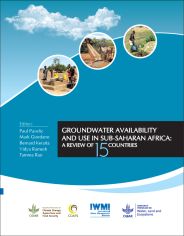Introduction
Traditionally, the spread and extent of human settlement beyond the major riparian zones of Sub-Saharan Africa (SSA) and across many other arid regions of the world, has been determined by availability of groundwater supplies, accessed through hand-dug wells andsprings. In more recent times, groundwater is the preferred means of supplying water to meet the growing demand of the rural, dispersed communities and the small urban towns across SSA. It is estimated that about 100 million of the rural population throughout SSA area serviced by groundwater for domestic supplies and livestock rearing (Adelana and MacDonald, 2008), with most of the villages and small towns having access to groundwater supplies (Masiyandima and Giordano, 2007).


